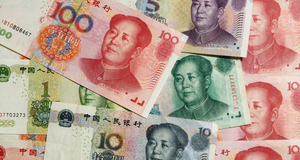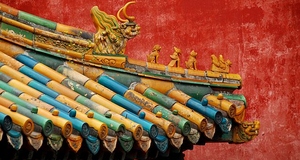From Cornell International Affairs Review VOL. 5 NO. 1Brazil's China Challenge
IN THIS ARTICLE
KEYWORDS
In 2001, Goldman Sachs named Brazil one of the four most important emerging economies, with China, Russia and India.1 The BRICs, a term coined by Jim O’Neill, are prophesized to become four of the top six economies in the world by 2050,2 and, with the United States, form a new core of power. O’Neill argued that if Brazil could, “keep inflation low and engage with the rest of the world, Brazil could immediately become something else.”3 In the past twenty years, Brazil has done that and more. It has established a vibrant democracy, controlled inflation and achieved solid growth.4 IntroductionBrazil has become something else: a rising power. It now plays an important role in international governance, through the G-20 and the Doha Round of the World Trade Organization.5 The international community has welcomed Brazil with open arms, naming it host for the 2014 FIFA World Cup and the 2016 Summer Olympics. It certainly seems possible that Brazil will be an established world power by 2050. However, where will it be by 2025? Today, it appears that it will not rival the U.S. or China by that time since Brazil has a number of obstacles to overcome. It will surmount some, but it seems clear that China will keep Brazil below the rank of a power with wide-reaching influence. In essence, Brazil’s growth is explained by demand from China for commodities and raw materials. This is not a sustainable model for a rise to world prominence. Furthermore, China’s entry into Latin America challenges Brazil’s drive towards regional primacy. Every global power first influences in its own continent, then neighboring regions, and then acquires a global role. 6 China’s increasingly important role in Latin America leaves Brazil without this natural progression. Brazil’s Claim to PowerWhat is Brazil’s call to primacy in terms of economics, politics, and international affairs? Politically and socially, Brazil’s transition to democracy in the mid-1980s is its first step towards global prominence. In the last two decades, Brazil has built solid democratic institutions and deepened democratic values throughout the citizenry. These democratic credentials have allowed it to play a larger role in Latin American affairs, with several countries viewing it as a political role-model.7 While Brazil’s democracy signifies a calling card to power8, it is minor when compared to the stable growth that Brazil has experienced since the late 1990s.9 Thanks largely to an economic scheme in 1994 called the “Real Plan,” Brazil made major adjustments that brought inflation under control and stabilized the economy.10 Introduced by Fernando Cardoso, then finance minister for President Itamar Franco, the plan stabilized the economy thanks to a new currency, austerity measures, better tax collection, and reorganized spending.11 It lacked “anticolonialist passions [and] the hostility to foreign links,”12 of previous schemes and achieved widespread popular approval. Cardoso’s subsequent election to the presidency allowed him to further reform and open up the Brazilian economy.13 Increased participation in international markets then produced the most significant part of Brazil’s growth.14 His successor, Luiz Inácio Lula da Silva, a union leader known for his leftist views, carried on Cardoso’s policies during his term in office between 2003 and 2011.15 This continuation resulted in Brazil growing an average of 3.3% annually between 2000 and 2009.16 The country’s GDP in 2010 was around US$1.6 trillion,17 making it one of two Latin American economies in above a trillion dollars. Brazil’s democracy and growth give the country’s leaders the impetus to vie for a more visible international role. As described by Rubens Ricupero, Cardoso’s successor as finance minister, Brazil’s foreign policy revolves around three goals: attaining a permanent seat on the United Nations Security Council, concluding the World Trade Organization’s Doha Round and achieving preponderance in South America.18 Enter the Dragon: China in Latin AmericaOne of the most important developments in Latin America in the last ten years is the increased participation of China within the region. This is mainly seen by the rise in trade between China and Latin America. The Sino-Chilean relationship is illustrative. In 1990, China was Chile’s 30th trading partner; today it is its largest export partner and second largest for imports.19 In 2009, China received 9.3% of Argentina’s exports, 12.5% of Brazil’s, 16% of Peru’s, and 16.5% of Chile’s.20 For Brazil, China is now its largest export destination.21 Between 2000 and 2007, the exportimport relationship between China and Latin America increased almost tenfold. In 2000, “China exported $4.2 billion to, and imported $5.1 billion from, Latin America,” and by 2007, China was exporting “$44.4 billion to, and imported $46.7 billion from, Latin America.”22 This level of trade is widely believed to rise and China could eventually surpass the U.S. as the region’s largest trading partner. This increase in trade volumes between China and Latin America can be seen as a positive exogenous shock to the Latin American economies.23 The Economist points out that Chinese (and Indian) demand for raw materials “ha[ve] played an important role in accelerating the region’s rate of economic growth to an average of 5.5%”24 in the mid 2000s. China’s foray into South America is driven by an unquenchable thirst for securing raw materials and commodities.25 China needs massive amounts of oil, iron ore, agricultural products and other commodities, most in high supply in South America.26 However, there are potential downfalls to this trade pattern, as suggests Patrice Franko, at Colby College. Most concerns are due to the relationship between China and Latin America being overwhelmingly driven by demand for commodities and raw materials.27 As Latin American countries strive to meet China’s demand, they risk becoming too reliant on this income. Given that commodities make up around 70% of Sino-Latin American trade, the region is dangerously exposed to the whims of commodity price fluctuations.28 Specialization in producing commodities to meet China’s demand has shifted investments into those markets and away from more capital-intensive segments. We have already seen how Mexico’s manufacturing plants, the maquiladoras, losing out to Chinese companies that offer lower costs of production.29 Brazil and other countries have been pushed out of producing value-added, manufactured goods and deeper into commodity production.30 China needs massive amounts of oil, iron ore, agricultural products and other commodities, most in high supply in South America.26 With China now Latin America’s second largest trade partner, the economics of the region has greatly changed. China’s importance is such that “the US has almost fallen off the map.” 31 Latin American countries have begun to view this period of Chinese preponderance more positively when compared to U.S.-backed Washington Consensus era of the 1990s.32 Taking advantage of the relative decline in America’s influence in Latin America, China has gained real power: the ability to get states to do what it wants it.33 The case of Ecuador shows this clearly: When the Ecuadorian government in 2008 requested that a Chinese-backed infrastructure project have a local partner, the Chinese refused funding and the Ecuadoreans relented.34 Leadership in South America: China, not BrazilIn essence, China has carved out a space for itself in through economic prowess and investment. It has also “noticeably intensified its diplomatic engagement with the region.” 35 A clear example of this Latin American-Chinese rapprochement is the strengthening of military ties with many countries in the region: China now sells weaponry to several Latin American militaries – traditional clients of American defense firms.36 Military ties between Latin America and China have been further bolstered by military education courses for Latin American officers given in China.37 Latin American militaries have traditionally been close to the U.S. While these ties have not been severed – Colombia and Mexico have remained close to the U.S. – China’s engagement with Latin American militaries remains an important change in the region. Further deepening its participation in Latin America, China has become a player in the region’s most important international organizations: the Organization of American States (OAS) and the Inter-American Development Bank (IDB). In 2004, China became a formal observer at the OAS, 38 and begun making sizeable contributions to missions, development programs, and purchases.39 In 2009 it signed a renewed five-year, US$1 million fund and pledged US$300,000 annually to fund a five-year scholarship program.40 In 2009, China became the third East Asian country to join the Inter-American Development Bank, joining Japan and South Korea.41 China will be contributing US$350 million to “soft loans for the region’s poorest nations and investment capital for small and medium-sized enterprises.”42 For 2010, China’s contribution quotas totaled US$125 million.43 Brazil contributed US$544.4 million in 2010 and controls 11% of votes, to China’s 0.004%.44 Yet, China’s engagement signals a determination to become a major player. The China EffectChina’s participation in Latin America challenges Brazil’s position as the region’s leader, but China also threatens Brazil’s economic advantages. The evidence shows that the economic relationship between the two nations in the past ten years is not aligned with Brazil’s global power ambitious. Rather, like its neighbors, Brazil runs the risk of becoming too reliant on income from exporting commodities to China. Roberto Abdenur, a former Brazilian ambassador to China, contrasts the relative power and economic situation. In the early 1990s, both had GDPs of around US$450 billion.45 Today, China is three times larger than Brazil, standing at US$4.9 trillion.46 Aside from increased competition in third markets, China has left Brazil behind economically. Over the past twenty years, Brazilians have seen, “a huge gap open between [their] international proportions and weight and the dimensions and influence of a ‘central country.”47 In essence, China has climbed to world prominence, while Brazil has lagged behind.48 Silverio Zebral, an economist at the OAS, characterizes Brazil’s current growth as a bubble created largely by China.49 Despite the Real’s (Brazil’s currency) recent overvaluation, Brazilian exports remained undisturbed thanks to Chinese consumption sustaining high international commodity prices.50 However, Brazil’s China-backed expansion does not equate with solid fundamental growth. Instead of building strong bases, Brazil has simply designed good economic rules and taken advantage of unparalleled demand for its commodities.51 Thus, China’s role in Brazil’s rise is a double-edged sword: it creates short-term growth and conditions for long-run decline This decline hinges on two developments: the Real’s appreciation and increased competition for exports from China itself. Today, Brazil operates under increased demand for its goods and an appreciated currency, while greater Chinese competition undermines its exports in third markets. Tomorrow, Brazil faces losing its competitiveness in manufactured goods and even in commodities – if it remains reliant on Chinese-demand to drive its export-led growth model. Increased competition has already caused shifts in the Brazilian export structure. 52 In 2001, around 50% of Brazil’s exports were manufactures, while commodities were 30%. By 2010, the situation reversed: commodities totaled 52% of exports while 30% was manufactured goods.53 The relationship then has the potential to not only impede Brazil’s ascent, but to push it backward, as it is not one between equal partners, but between colony and metropolis In 2009, 70% of Brazil’s exports to China were commodities54 and 90% of Chinese exports to Brazil were manufactured products.55 Ricupero argues that this is “simply a colonial relationship.”56 China also inhibits Brazilian added-value exports from entering the Chinese market.57 While Brazil’s competitive advantage lies in commodities, it has a large added-value industry. It produces automobiles, airplanes, and hightech products. Yet, few of these can enter the Chinese market, thus weakening Brazilian added-value industry.58 Brazilian authorities have recognized this and taken action. Brazil has initiated antidumping cases against Chinese products59 and in 2009, Ivan Ramalho, then trade vice minister, declared that, “Brazil wants to export more value-added products to China,”60 recognizing the unbalanced trade relation. While claiming that, “Brazil needs China as much as China needs Brazil,” Sergio Amaral, head of the China-Brazil Business Council, accepts that the relationship is indeed distorted in China’s favor.61 Brazil’s economy is now the most important in the region. Most significantly, trade minister Fernando Pimentel announced that Brazil would make China’s overvaluation of the renminbi a priority.62 Following a meeting in Brasilia with Rousseff, U.S. Treasury Secretary Timothy Geithner said that the U.S. and Brazil would “work together on the global stage to build a more balanced and more stable, stronger multilateral economic system,” a signal they would lobby China to appreciate its currency. The agreement with the U.S. shows that Rousseff understands the challenge that China represents to Brazil’s long-term growth and economic stability. She has “identified the undervalued yuan as a major threat to Brazil’s economic boom,”63 and agreed to act. In further response, Brazil has imposed tariffs on Chinese imports, including a new 4.10 U.S. dollar per kilo tariff on Chinese synthetic fibers – on top of the 26% import tax those goods are already charged.64 However, should Brazilian diplomacy fail in changing China’s position on the renminbi or unbalanced trade, Brazil will be unable to foster the development of addedvalue industries necessary to be a global power economy. Under such conditions, Brazil will most certainly not become a world power by 2025. It will continue to experience growth as long as Asia continues to demand its products, but the foundations for achieving sustained development and gaining power will remain absent.Continued on Next Page » Suggested Reading from Inquiries Journal
Inquiries Journal provides undergraduate and graduate students around the world a platform for the wide dissemination of academic work over a range of core disciplines. Representing the work of students from hundreds of institutions around the globe, Inquiries Journal's large database of academic articles is completely free. Learn more | Blog | Submit Latest in International Affairs |




















